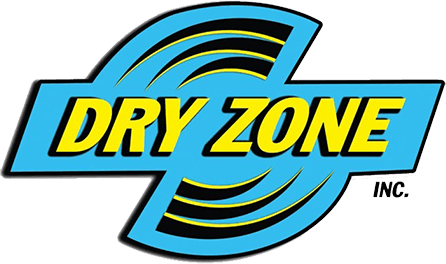Here in Southwest Florida, a natural disaster such as a hurricane or tropical storm can happen anytime and once it happens, the time to prepare is gone. That is why it is important to prepare for any disasters that may happen. Knowing what to prepare in advance can ultimately save your life as well as your family and friends’ lives.
DryZone suggests an important way to prepare is to compile a Basic Disaster Supply Kit. At a minimum, you should prepare for at least 3 days and nights. A basic emergency supply kit should include the following recommended items:
• Water . There should be at least one gallon of water per day for at least three days for drinking and sanitation.
• Food. There should be at least a three-day supply of non-perishable food.
• An NOAA Weather Radio with tone alert and battery-powered or hand-crank radio. Make sure there are extra batteries for both are available.
• A Flashlight. Make sure extra batteries are available as well.
• A First aid kit.
• A Whistle to signal for help.
• A Dust Mask. This is used to help filter contaminated air.
• Plastic sheeting and duct tape to shelter-in-place
• Garbage bags, plastic ties, and moist towelettes for personal sanitation.
• A Wrench or Pliers to turn off utilities.
• Can opener for canned food.
• A map.
• A Cell phone with an inverter or solar charger.
If you have obtained the necessary supplies for a basic emergency supply kit above, you might consider adding the following optional items;
• Emergency reference materials.
• Sleeping bag(s) or warm blanket(s), especially if you live in a cold-weather climate.
• Cash and change.
• Important family documents needed such as bank account information, insurance policies, or personal identification. Make sure all of this information is kept safe in portable, waterproof container.
• Necessary clothes. Make sure to include appropriate clothing that is climate appropriate.
• Infant formula and diapers if you have infants or small children.
• Feminine supplies and personal hygiene products.
• A fire extinguisher.
• Matches. Make sure you keep them somewhere that is dry, such as a waterproof container.
• Paper, pens, and pencils.
• Activities in case of boredom
In an emergency, someone might suffer an injury and need to be treated. It is wise to be prepared to know how to treat minor injuries, know how to stop bleeding, prevent infection, and assist in decontamination. Any serious disaster survivalist may consider taking a first aid class to learn these vital skills.
A First Aid Kit can include many things. The list below is not exhaustive, but including these items will help in the treatment of minor injuries that may be sustained in an emergency situation.
• Gloves. At least two pairs of Latex or other sterile material if you are allergic to latex.
• Bandages in range of shapes and sizes.
• A Thermometer.
• Cleansing agent and antibiotic towelettes.
• Antibiotic ointment.
• Ointment for burns.
• Eye wash solution.
• Lubricant.
• Over the counter drugs such as
• Aspirin or non-aspirin pain reliever
• Anti-diarrhea medication
• Antacid
• Laxative
• Prescribed medications and medical supplies. Make sure to take note of expiration dates and discard expired medication and replace immediately.
• Scissors and tweezers
Additional information on First Aid Kits can be found at Redcross.org.
If you or your family have any special needs, the following items also should be considered in your first aid kit.
If you, your family, or friends have a baby, include:
• Formula
• Diapers
• Bottles
• Powdered Milk
• Medications
• Moist towelettes
• Diaper rash ointment
For more information on caring for children in an emergency, please visit Center for Disease Control and Prevention’s website.
Other items to consider for adults in an emergency situation are:
• Denture needs
• Contact lenses
• An extra pair of eye glasses

